Ready for Take Off? The 'Space Oddity' Aesthetic Is the Time-Traveling, Restaurant-Led Trend You're Definitely Going to See More of in Homes Next Year
This aesthetic will transport you to another galaxy in the months to come, through theatrical "light shifts, sculptural forms, and unexpected materials" that speak to both fantasy and emotion
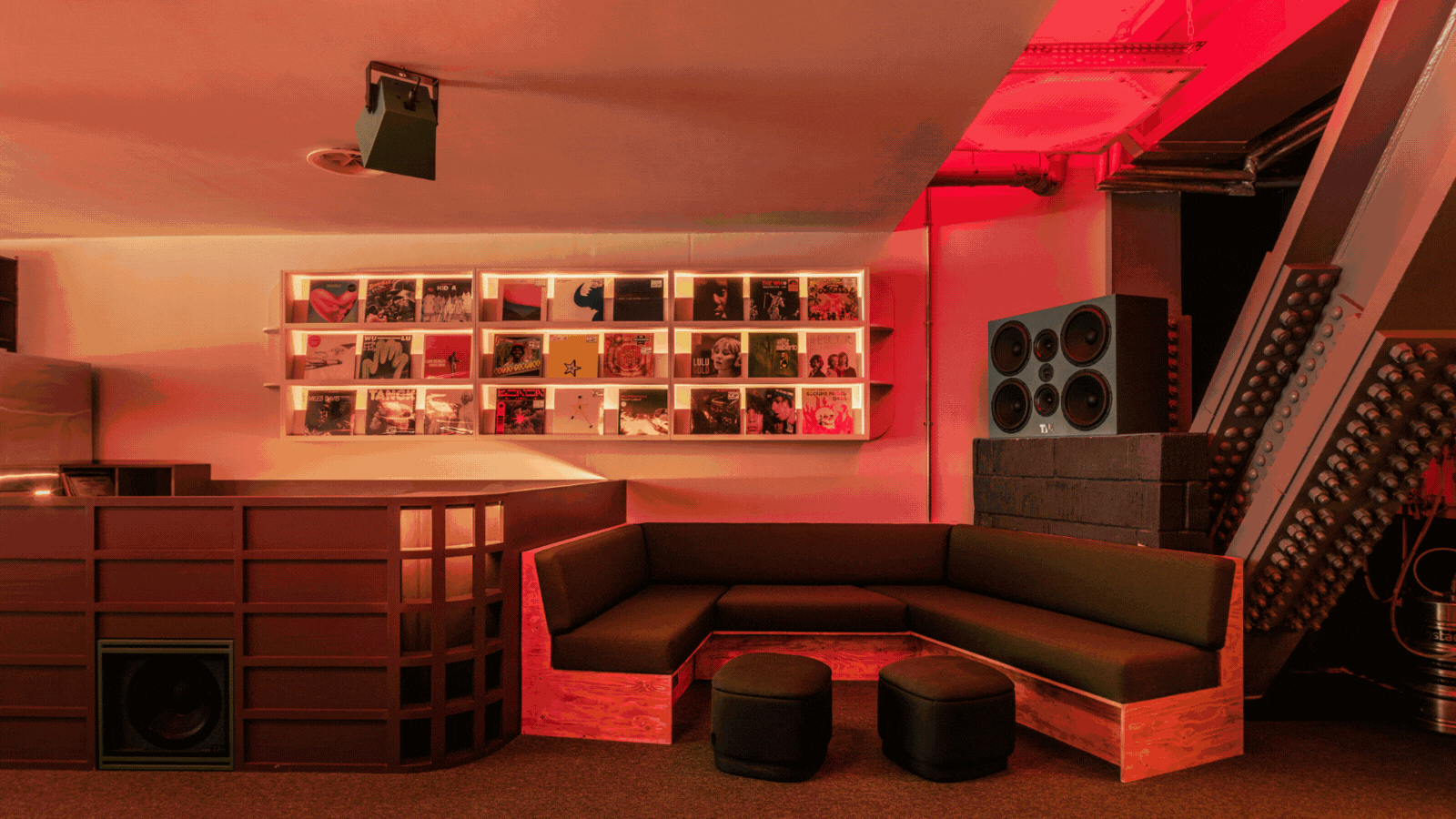
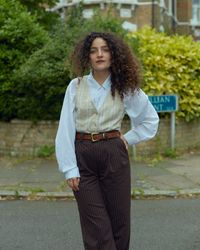
"Design is interesting because it's a reflection of society and also a reflection of what's happening around the world," legendary American writer and critic Susan Sontag once wrote. If there's one thing that the many hospitality destinations I visited over the past few months, be it restaurants, hotels, or bars, projected back at me, it is a desire to break free from the ordinary, embracing interiors as an opportunity to escape reality into a fantasy — a daydream.
That's always been the distinctive trait of Space Age design, the iconic decor genre that, starting from the late Fifties, brought the intergalactic look of the US and USSR rockets and satellites, their porthole windows, textured ceilings, striking, diffused lighting, and soothing palettes inside the home at a time when space exploration was only just surfacing.
But what I found so deeply captivating about so many of my favorite restaurant design examples as of late is that more than just reviving that futuristic interior style, each of those imaginatively conceived environments seeks to rewrite what the future may even look like.
Drawing from the most disparate — yet equally energizing and optimistic — eras, aesthetic canons, and cultural references, the interior design trend I have proceeded to name Space Oddity, which designers agree is on the rise, is one that looks back as much as it looks forward. The aim, though, remains the same: creating rooms that stimulate the eye while simultaneously transporting the mind, making them into an uplifting and, at times, quirky, antidote to the uncertainty of our times.
A Lust for a More Poetic, Playful World
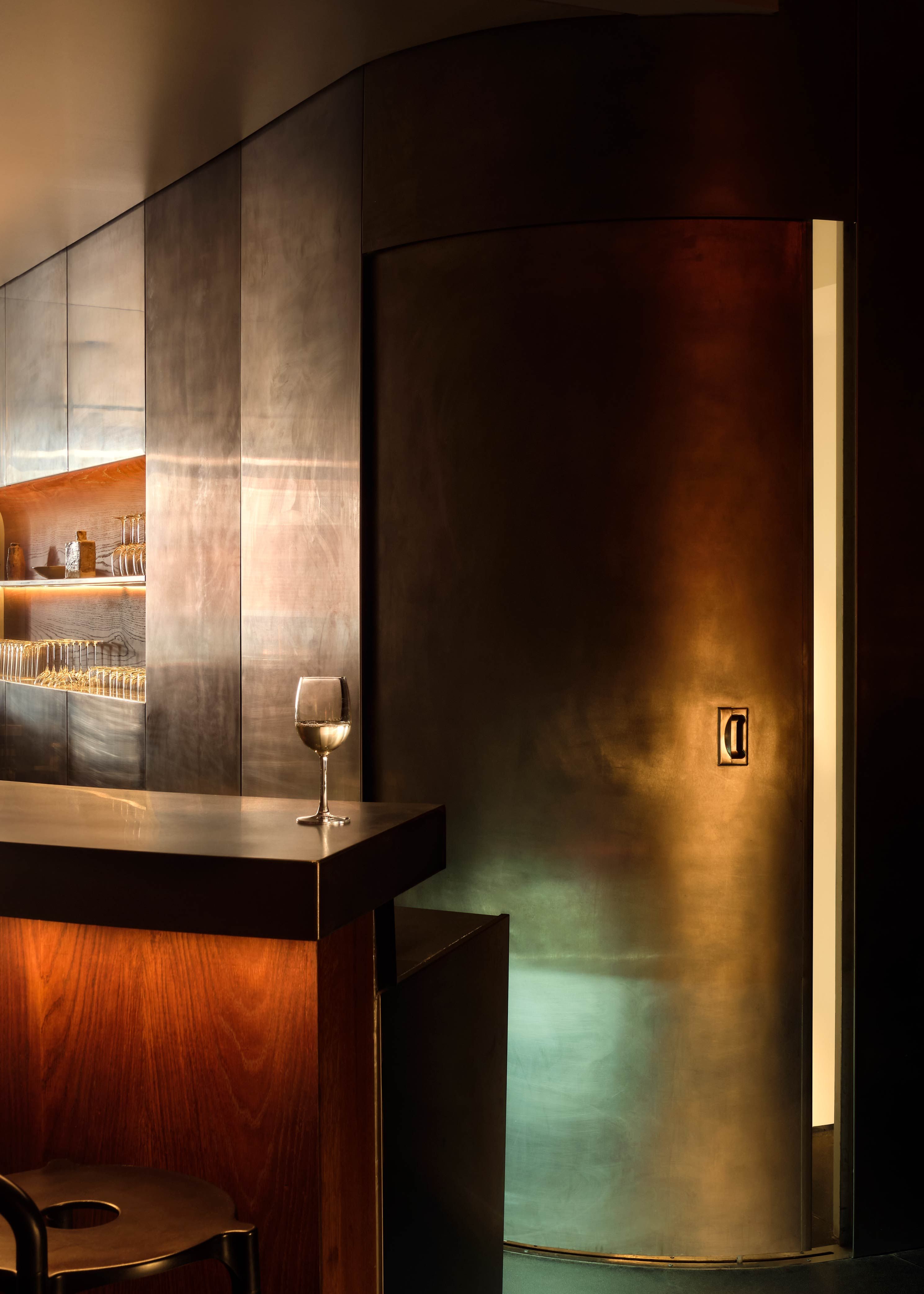
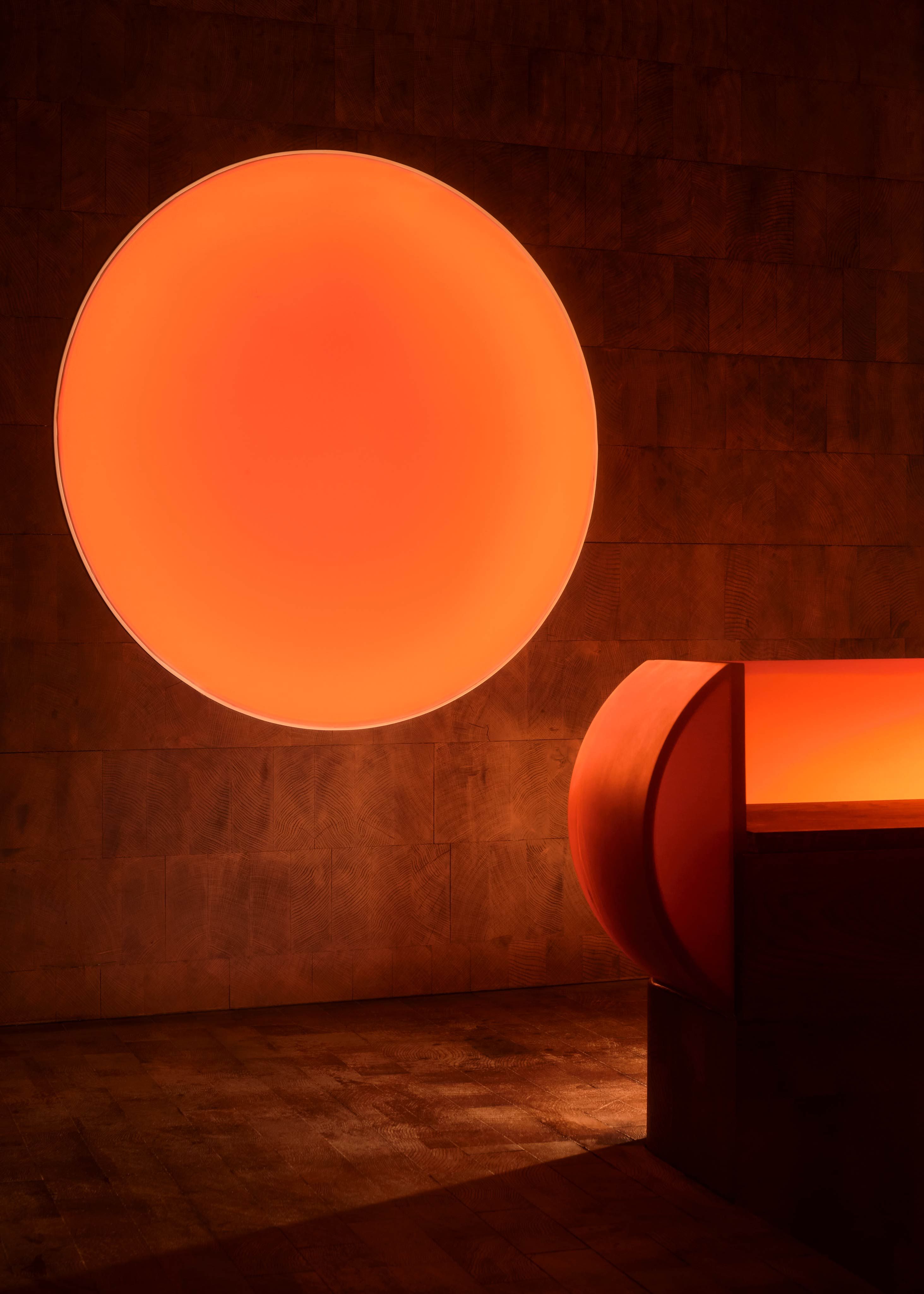
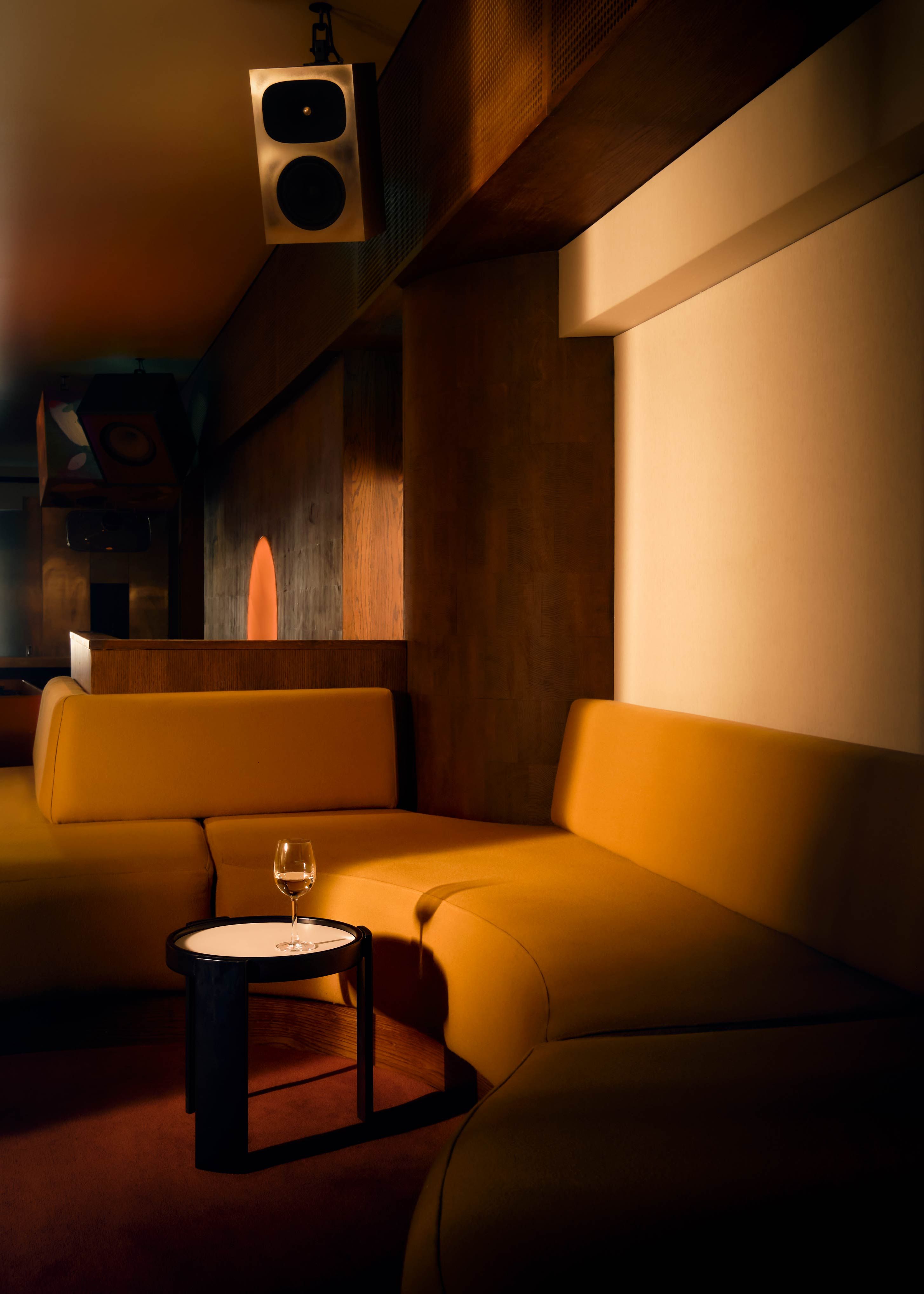
"A sense of optimism and escapism, balanced with a calming quality": this is the heart of the Space Oddity aesthetic for London-based architectural studio EBBA, whose work straddles residential, commercial, exhibition, as well as furniture design, and includes the realization of moody hi-fi listening bar Space Talk.
Describing it as inherently playful yet sophisticated, they add that, for them, this type of interior not only merges nostalgia for minimalist Bauhaus with mid-century modern touches of the future, but it also brings "contemporary sensibilities for tactility, warmth, and light".
Samuel Hosker, the founder and creative director of hospitality interior architecture firm North End Design, concurs. "It's always fascinating to see what trends come to the fore each year, and when discussions on the making of Stevie Parle's Town began a year or so back, there was definitely a desire for fun." Much like the Soviet spaceship feel of that Covent Garden address, he sees the Space Oddity look as a whole as "bold, curvy, organic, and colorful," the designer adds.
The Livingetc newsletters are your inside source for what’s shaping interiors now - and what’s next. Discover trend forecasts, smart style ideas, and curated shopping inspiration that brings design to life. Subscribe today and stay ahead of the curve.
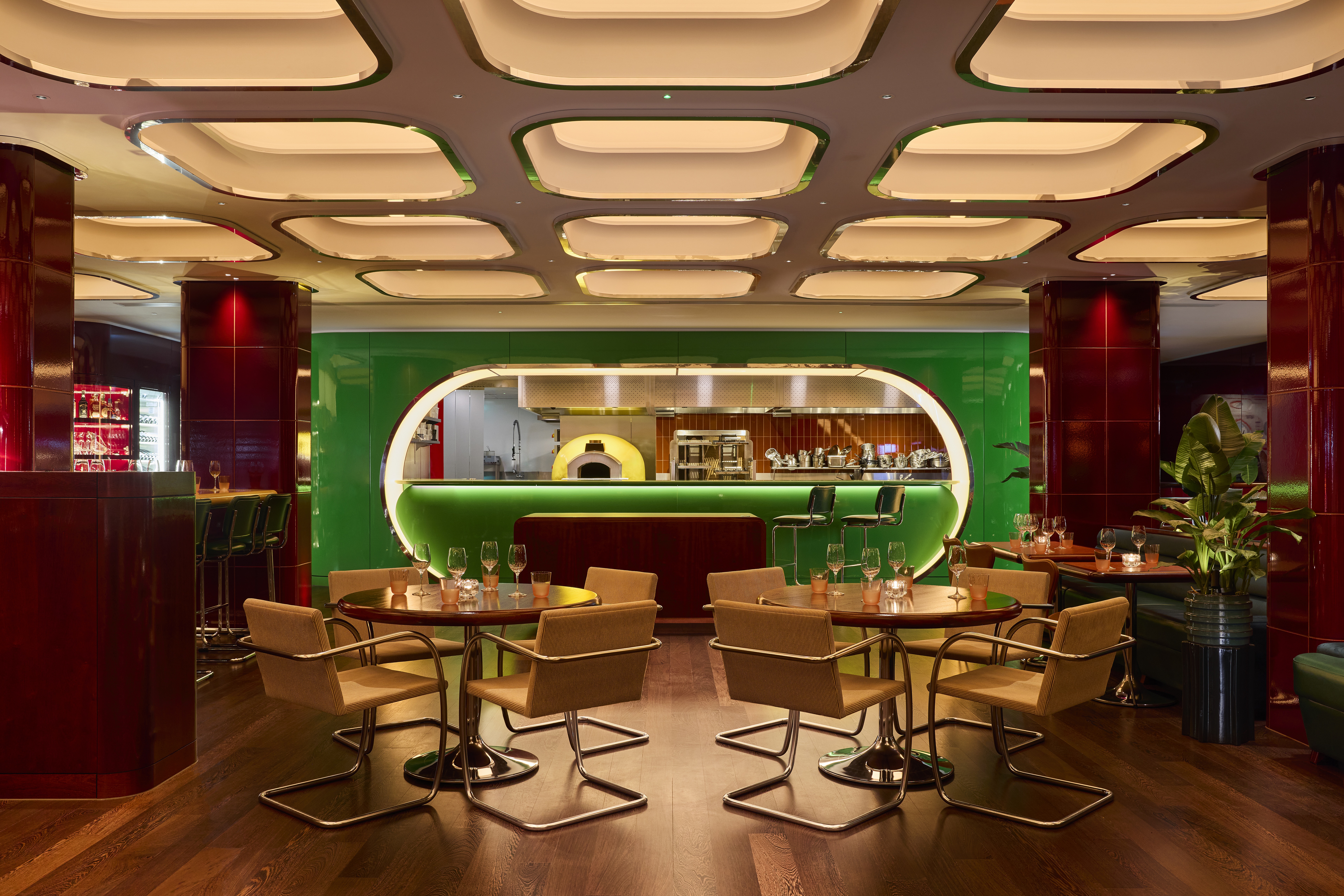
The interiors of TOWN rework a 1977 Apple logo, a Verner Panton interior, and mid-century Soviet public spaces into a theatrical atmosphere that stays with you long after you pay the check.
For Hosker, the time for manicured, "minimalist restaurants that," he says, "photograph well but that, when you're in them, feel so cold and, frankly, quite boring," is over. Instead, we have reached a point of departure that sees people shy away from places exclusively "designed for Instagram and glossy magazines" in favor of places crafted with much more resonant, purposeful intentions.
In a society where screen-induced mental fatigue has become integral to our everyday lives, as has the non-stop flow of news and disturbing images, the Space Oddity aesthetic grants us some respite. "It's about creating environments that let people dream again," the EBBA team claims, while for the Paris-based creatives of multidisciplinary collective Uchronia, it is only in the encounter between the real and the otherworldly that this burgeoning decor trend picks up its pace.
Space Oddity to them rings as "a poetic escape, a world where technology blends with dreams and organic forms rub shoulders with fantasy," they explain. Wrapping people up in a bubble of imagination and gentleness while celebrating boldness and lightness, it responds to a need for wonder and entertainment, while also betraying our urge to counter "the rigidity of contemporary minimalism".
How Emotionally Immersive Design Conquered Hospitality
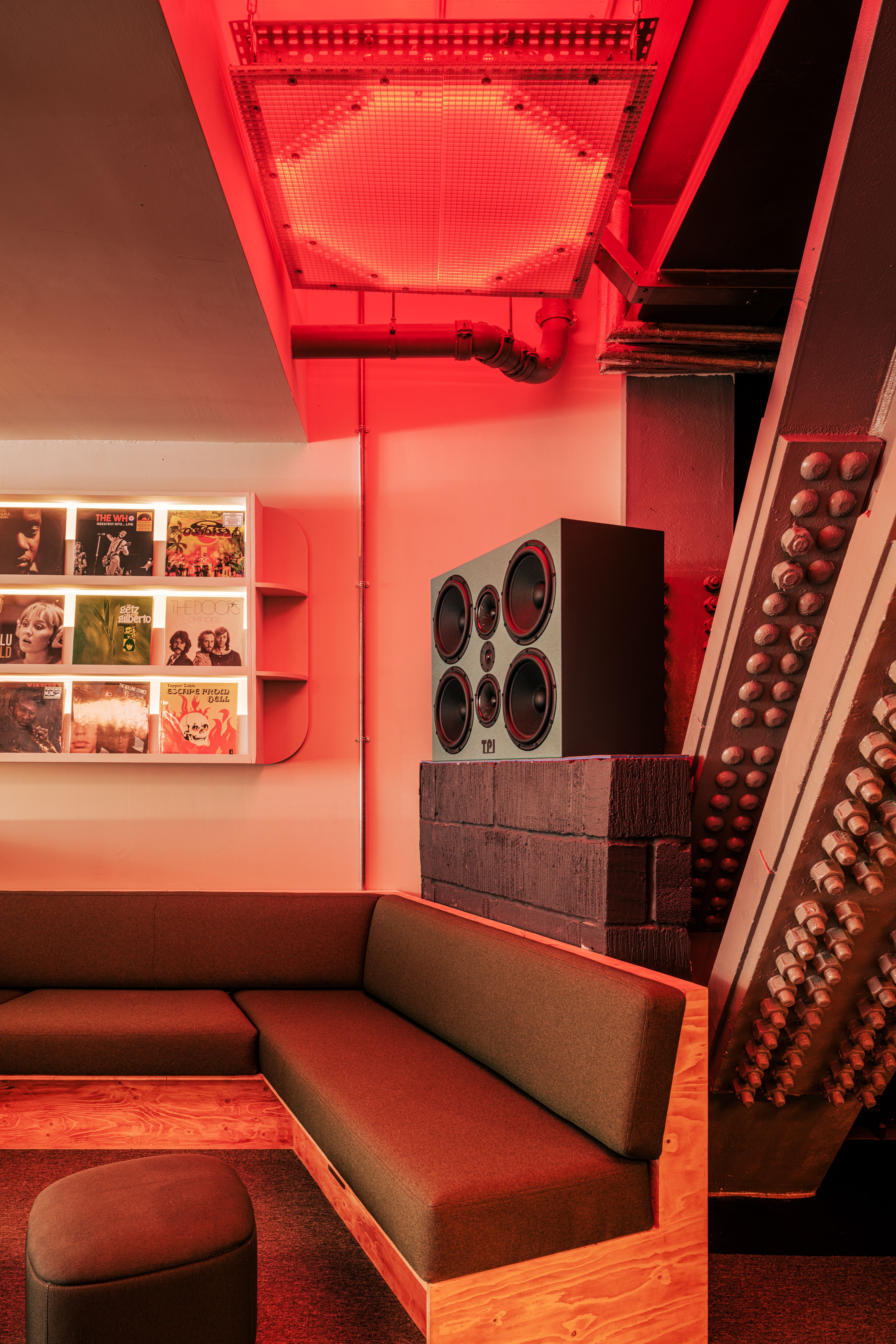
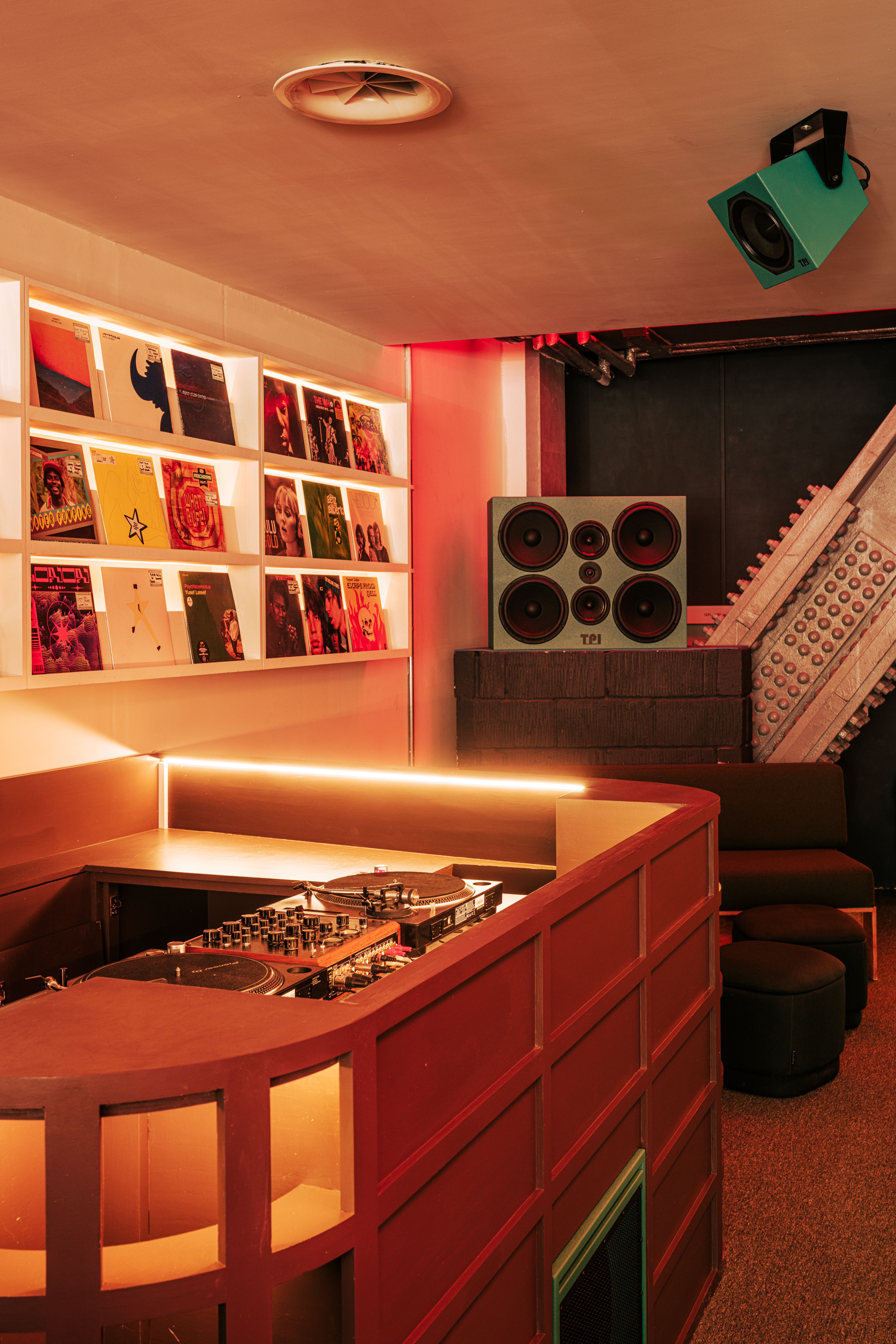
I am curious to hear about what, specifically, designers think is making this retro-fueled, time-traveling decor genre so widely popular when it comes to all things lifestyle — eateries, nightclubs, bars, you name it — having spotted the look more and more frequently for a while now.
Their answers remind me that, in travel (see resortcore) like in the culinary realm (see London's restaurant merchandise), the focus for interior practitioners is currently shifting from fleeting memories to the delivery of a multisensory experience that lingers on well after the end of a dinner, a drink, or a sojourn.
"People are seeking immersive experiences rather than just environments," the EBBA architects share. The Space Oddity phenomenon, then, "invites us to slow down, interact, and feel part of a narrative larger than ourselves". Just because I personally found numerous of the best restaurants in London to have jumped onto the trend doesn't mean this hasn't also woven its way into hotel design, as Uchronia recounts.
Within that industry, "this Space Age-informed aesthetic allows for the creation of a total emotional experience: it is no longer just about sleeping in a place, but about living a fantasy," the designers add. Enveloping shapes, unique color palettes, and playful materials contribute to that feeling of immersion, enabling each guest to "literally enter a tangible dream".
Embark on a Space Odyssey — In 5 Elements
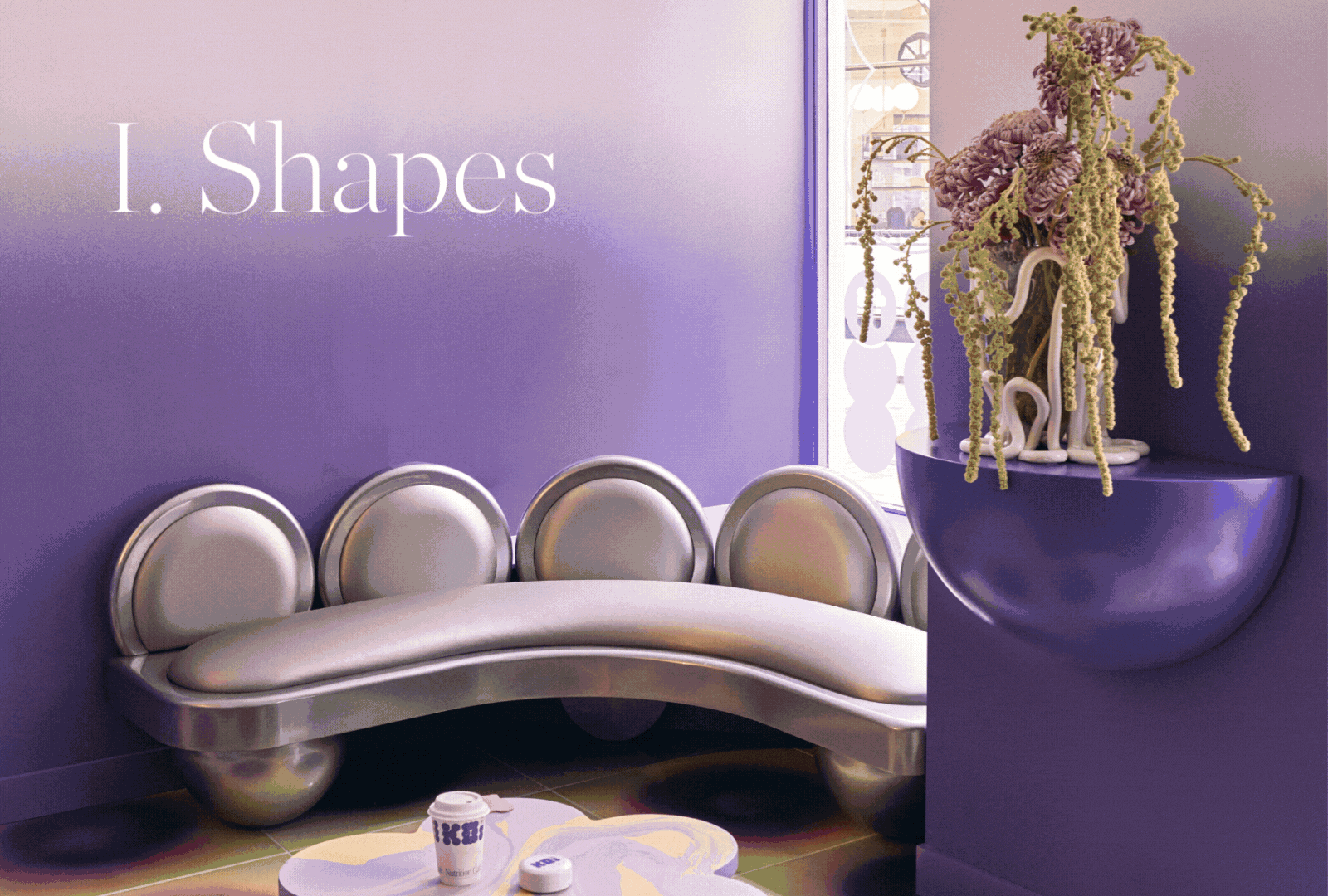
Shapes, colors, lights, materials, and architectural details are the criteria that will allow you to inject a life of its own into every space. Not sure how to style them for a Space Oddity look? We've got you.
Just as for any trend that emerges within the more creative and exclusive side of things, there is a risk the Space Oddity aesthetic will feel hard to recreate in the home, particularly considering its irreverent, lighting- and whimsical silhouettes-driven approach to decor. Even then, North End Design's founding creative director, Samuel Hosker, makes me realize that, in its subtle nostalgia, the interior genre stays widely approachable.
"Clean, modern, and simple in many ways, but always colorful, this style reminds me of when I was ten and designing my bedroom," he says. "Growing up in the 1990s, I remember that not just big names like Pierre Cardin and Marc Newson, but even IKEA itself, were all definitely leaning into it, and the lava lamps and bean bags in my boyhood room testify that."
Recalling a V&A evening lecture he attended years ago, hosted by the set designer for Kubrick's 2001: A Space Odyssey, Hosker explains that much of the research and development they carried out for that one 1968 film helped influence the Space Age genre in its entirety. But what are the elements that define its contemporary reinvention in both the residential and commercial design scene?
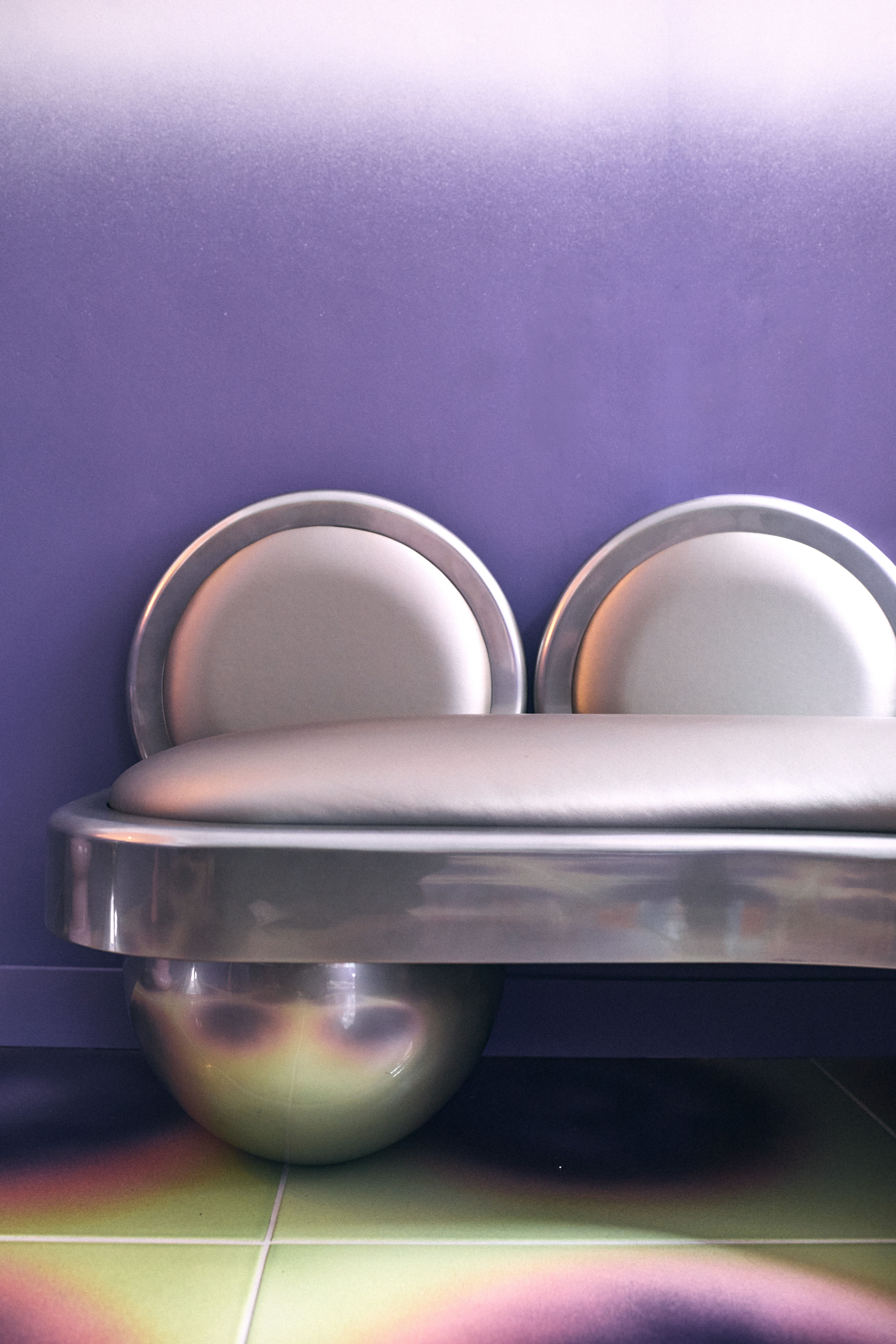
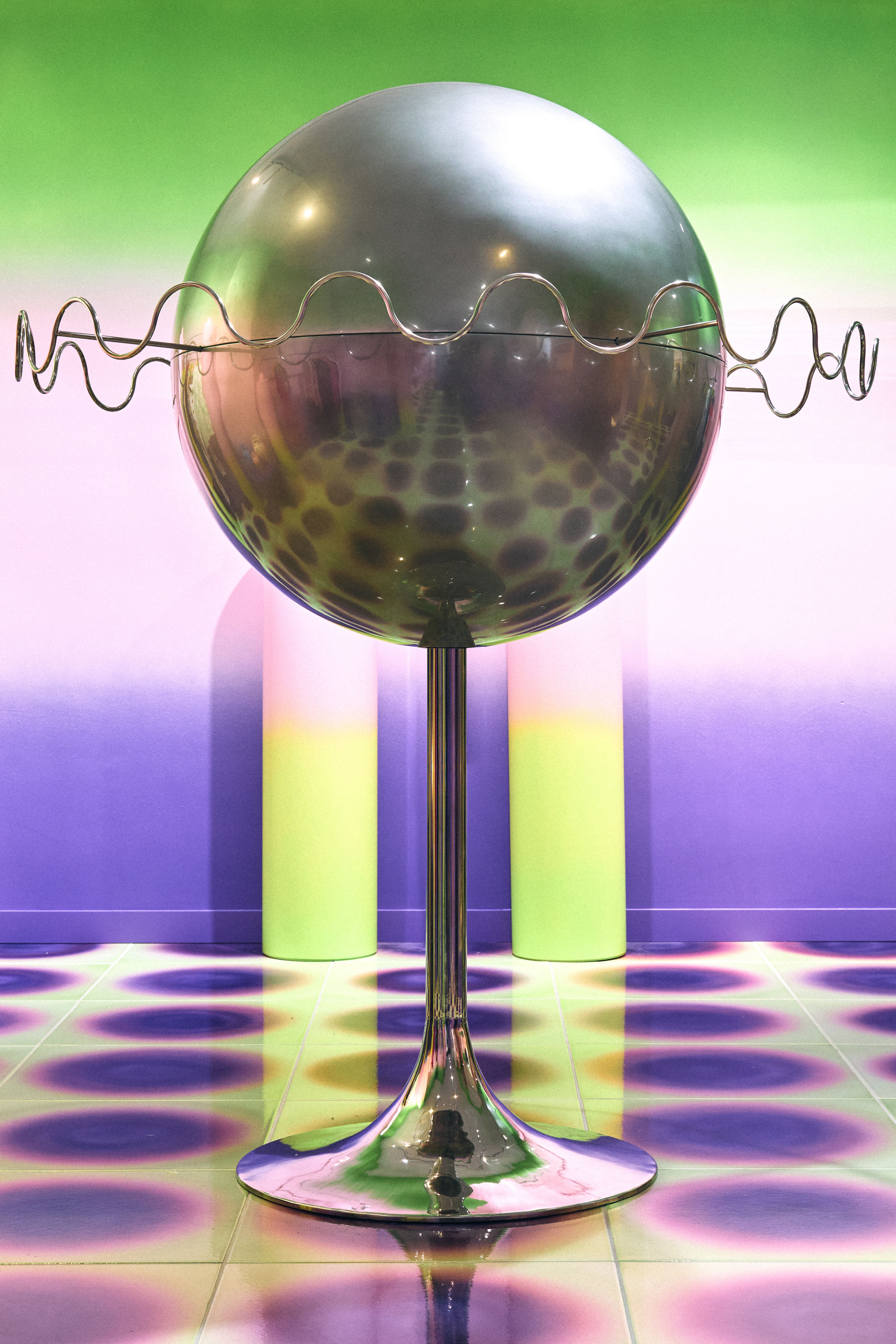
For the team of Uchronia, the Space Oddity aesthetic is one grounded in I. Shapes. "Soft, rounded, almost liquid, these fantastical silhouettes evoke space exploration and nature, creating a fluid, welcoming universe while also inviting reverie." More than merely stylistic, these "curved forms and continuous lines guide the body and the eye," EBBA architects add. "The use of organic shapes references futurism while maintaining a sculptural calm."
Be it not for its strategic use of II. Colors, this growing trend, would be far less noticeable. If early-days Space Age design would stick to shades that, Hosker explains, "would help humans stay calm in claustrophobic spaces for long periods of time," today, Space Oddity is leaning into the wider chromatic spectrum, albeit with caution.
"A mix of muted neutrals and deep cosmic tones, like silvers, off-whites, warm woods, and soft reds or blues, balances escapism with familiarity, making the environment feel human and grounded," the EBBA team advises. While Uchronia has become known for its vibrant, dreamlike palettes: "celadon pastels, lunar blues, and retro oranges that feed into both vintage science fiction and emotional comfort".
No interior design style could ever be described as cinematic without the right choice of... III. Lights, and Dougal Sadler, the founding director of his namesake architectural firm and the mind behind 'hybrid' record store, cafe, and listening bar, New Forms, knows it well, having sculpted its sublimely uncanny spaces as "a journey from an 'outside' to an 'inside'" experimenting with the dialogue between natural and artificial light.
That interplay, designers seem to agree, is key: "soft adaptive lighting that mimics natural phenomena like sunsets or atmospheric glows creates an immersive quality, enhancing the sense of time and transformation within a space," EBBA shares. Diffused, warm, and largely indirect light, meanwhile, infuses environments with "a floating, almost surreal atmosphere, where every reflection appears suspended," Uchronia weighs in.
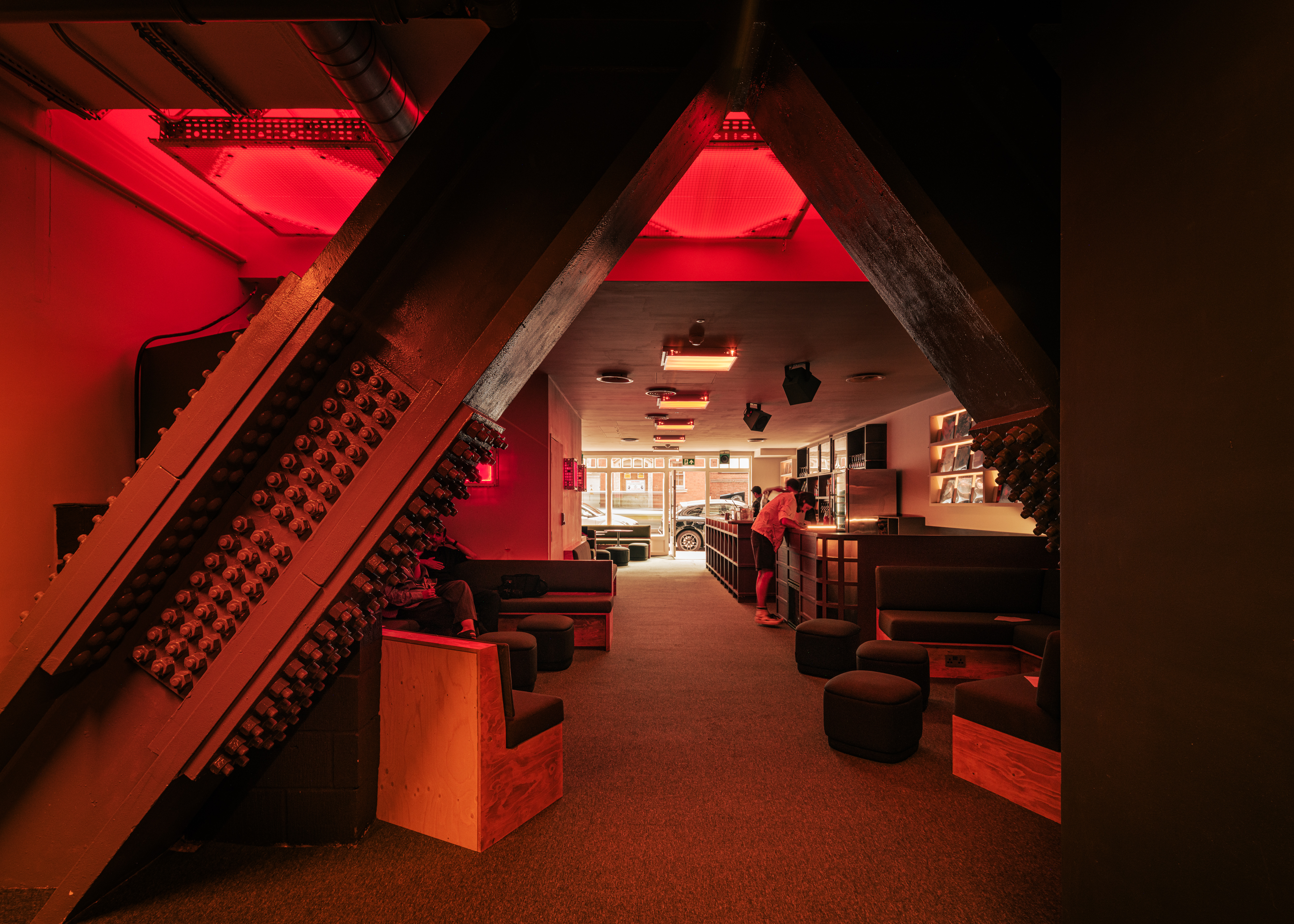
The journey from artificial to natural light, as captured by Dougal Sadler Architects' interiors for New Forms.
Much of the appeal of the Space Oddity trend lies in its winning juxtaposition of sheeny and matte surfaces, which is why IV. Materials really matter. If, originally, Space Age design stood out for "lightweight, smooth, and cleanable materials that could be flat-packed or vacuum-molded into rounded compound curves for space travel," as Hosker recounts, its 2025 renaissance combines moiré, translucent resins, mirrors, and glossy lacquers: materials whose "shine echoes the futuristic cabins of the Sixties, while their textures put touch back to the heart of design," Uchronia explains.
Accentuating the duality cold/warm, brushed steel, polished chrome, and high-gloss finishes paired with warm timbers or textured upholstery make for further "depth and tactility," EBBA adds.
Proving that nothing can be left to chance, some of the most spectacular examples of Space Oddity-style decor are made such by unexpected — and even hidden-away — V. Architectural Details: think "flowing or back-lit, coffered ceilings, mirror mosaics, and sculptural accessories that, giving an impression of movement, allow environments to feel as if they were breathing," Uchronia's team says.
That's what happens in the Harry Nuriev-designed restaurant Noisy Oyster, where all cabling was left exposed to give off the feel of a "work-in-progress".
Or again, at Sadler's New Forms, where the rectangular plan was fractured through the insertion of massing to create "a front and rear poché defined by the bespoke bar, partition walls, and upholstered banquettes framed by illuminated record shelving and bespoke light fittings". Plus, turning the ordinary into something extraordinary, all lights are made from materials generally found in office suspended ceiling systems, like vents, grills, extruded steel tray, nuts, and bolts.
Where "the Boundary Between Reality and Imagination Disappears"
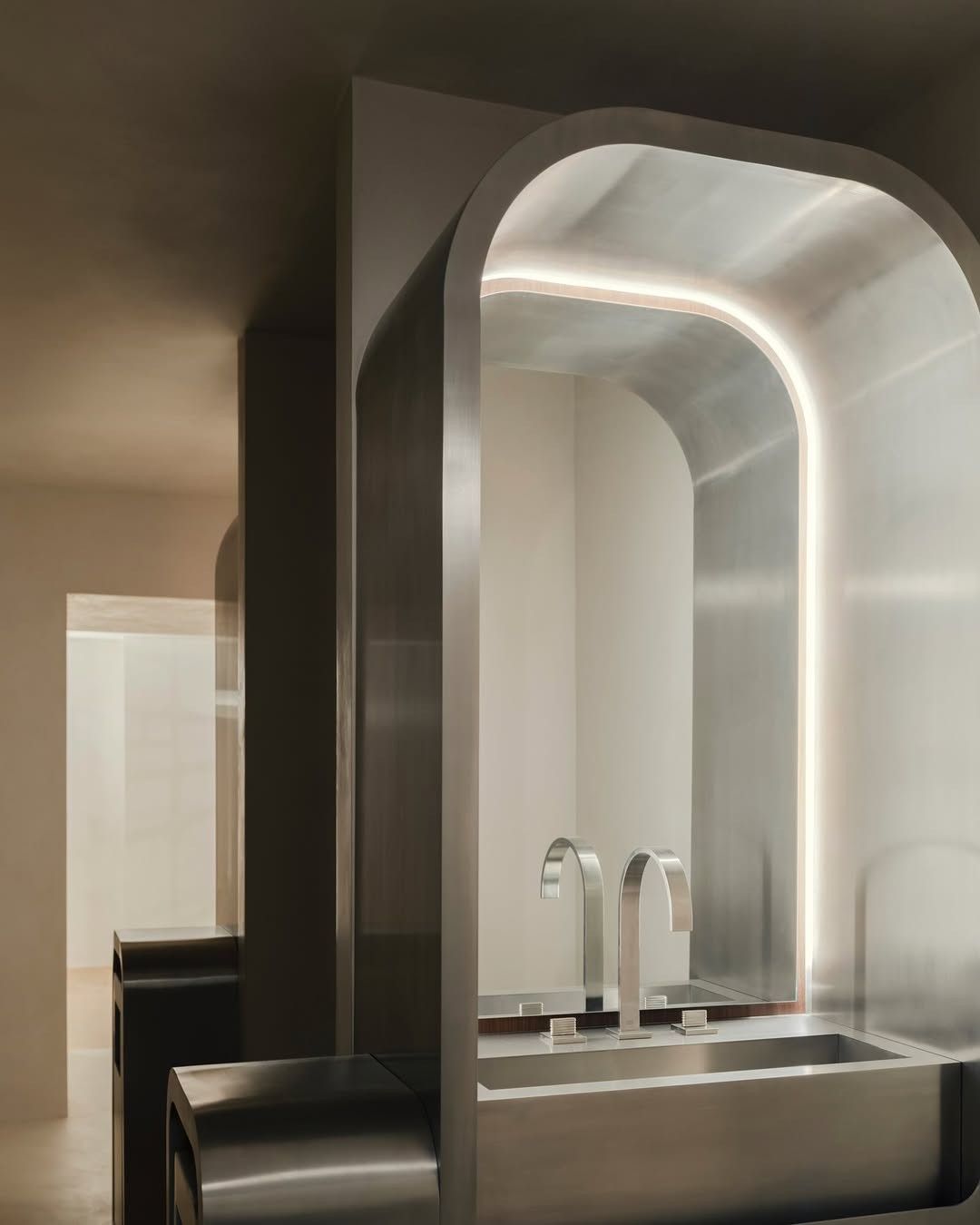
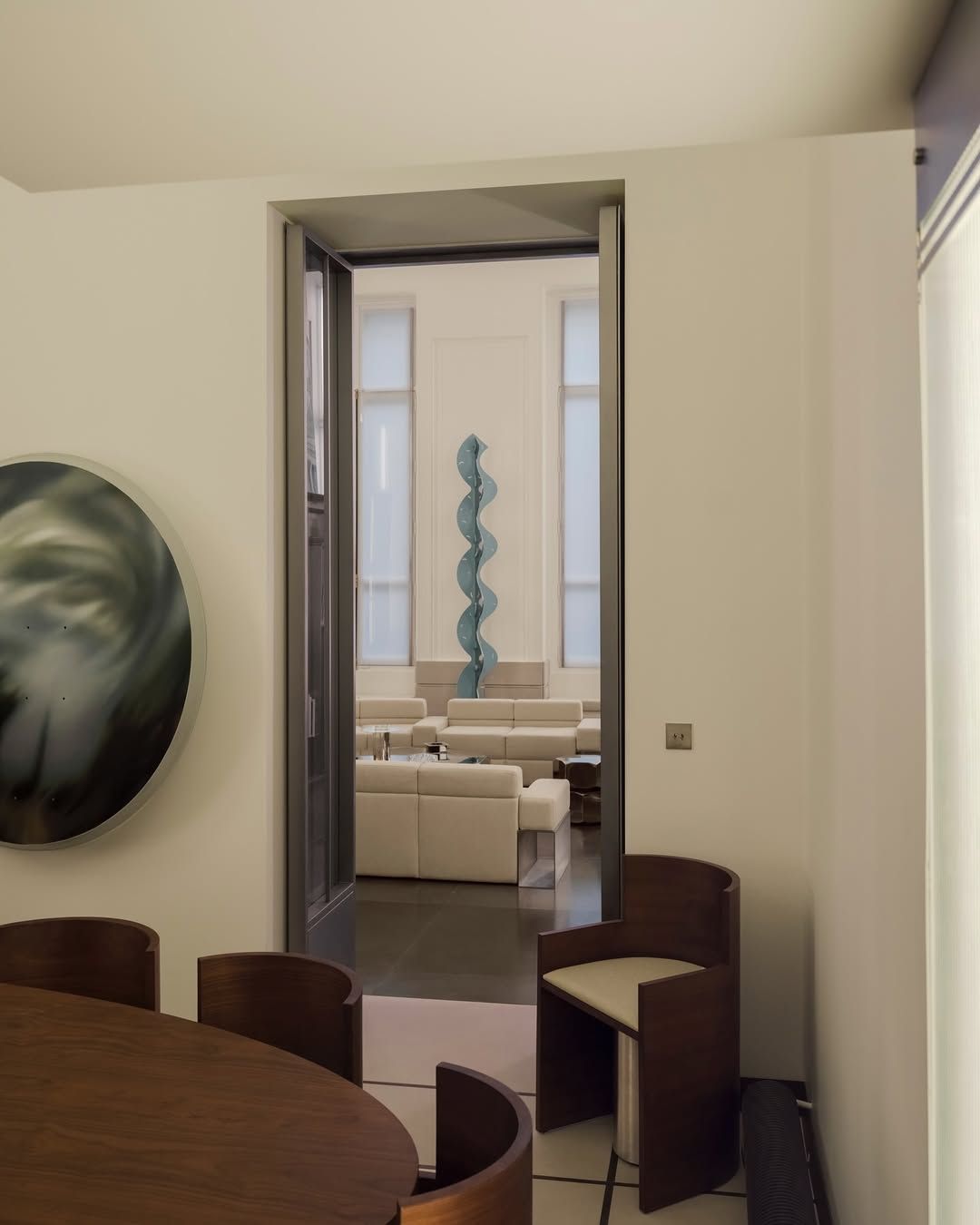
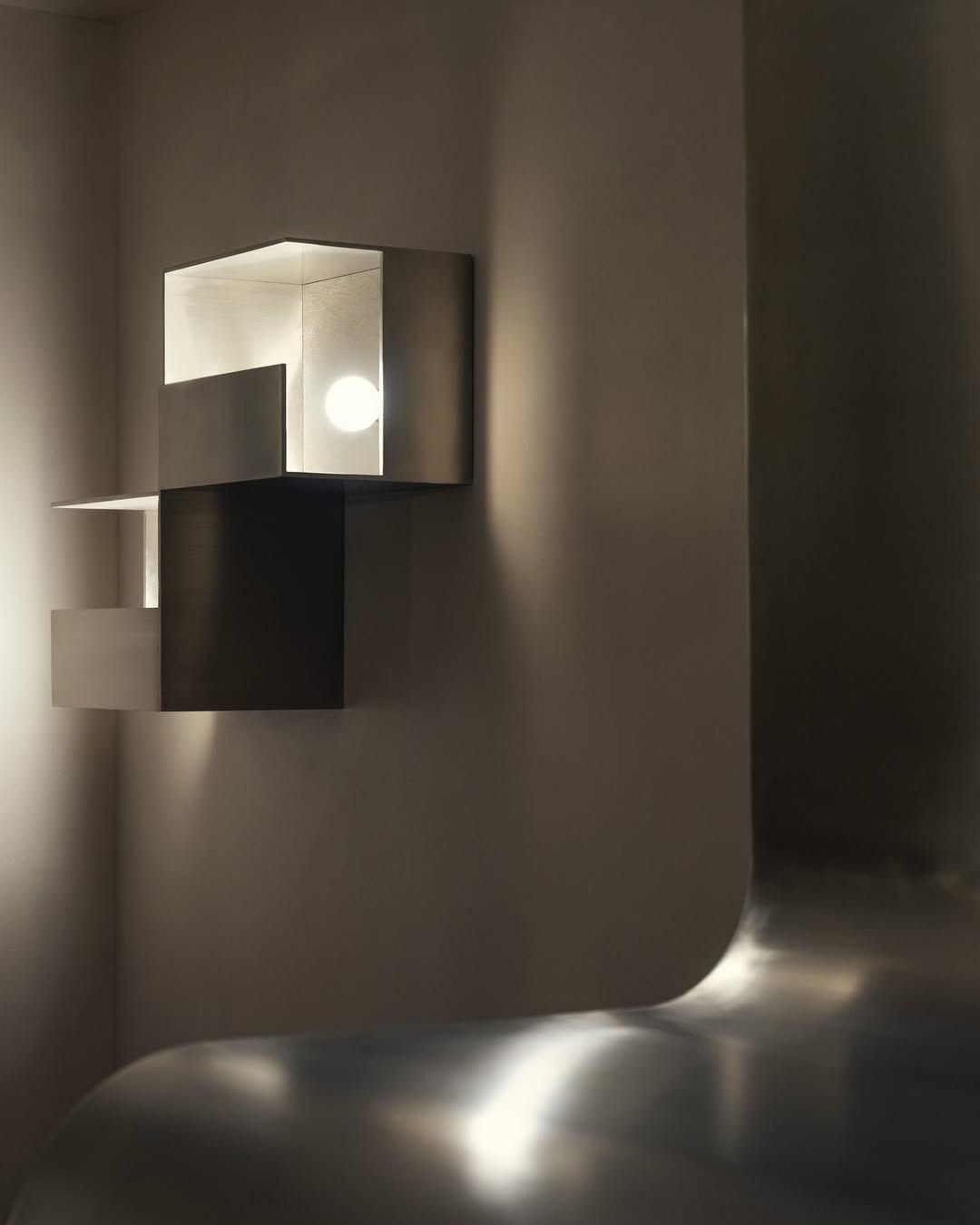
We know what you're thinking: it may be hard to imagine living in a place like any of the above dreamscapes. But in the domestic sphere, the Space Oddity aesthetic becomes more intimate, inviting us "to play with color and form to make everyday life more sensory, without going overboard," say the Uchronia creatives.
Unveiled last June, French interior architect Pauline Leprince's chrome-clad renovation of late fashion designer Karl Lagerfeld's Paris apartment is a primary example of how that can be done.
Here, the back-lit, round-edged lines of a futuristic bar counter offer inspiration for a one-of-a-kind bathroom that oozes with character and charm. Porthole window-shaped or satellite-looking abstract artworks are inserted as a reference to expeditions to the 'outer' world, while pastel-shaded resin pieces, buttery notes, and warm wood notes keep us grounded in the comfort and organicness of the traditional home.
The bed itself, a solid masterpiece cast from brushed stainless steel, complete with integrated shelving units, becomes a spacecraft capsule, ready to take off. Aiding, at once, function, escapism, and repose, it demonstrates how, in interiors like in life, all limits can be undone.
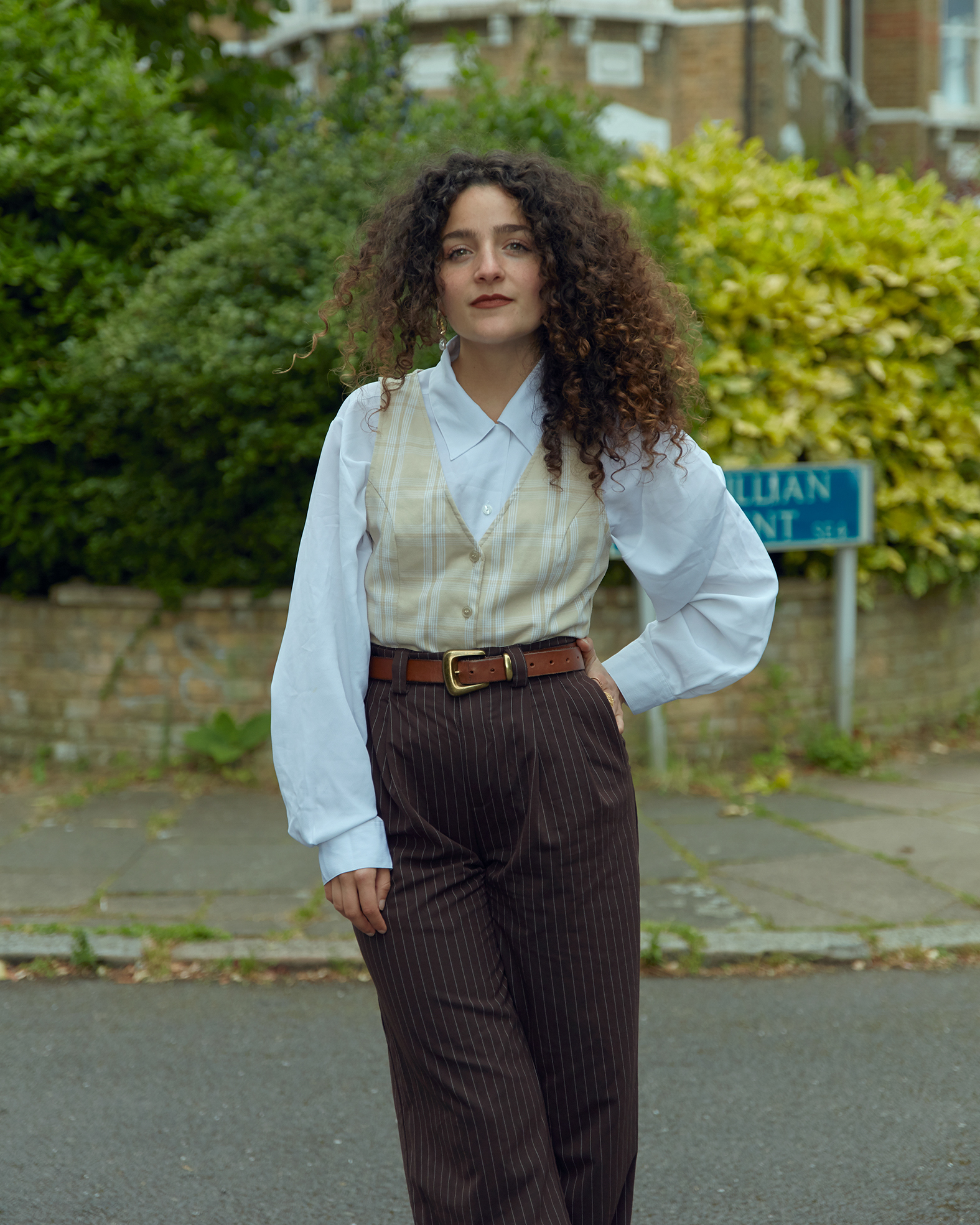
Gilda Bruno is Livingetc's Lifestyle Editor. Before joining the team, she worked as an Editorial Assistant on the print edition of AnOther Magazine and as a freelance Sub-Editor on the Life & Arts desk of the Financial Times. Between 2020 and today, Gilda's arts and culture writing has appeared in a number of books and publications including Apartamento’s Liguria: Recipes & Wanderings Along the Italian Riviera, Sam Wright’s debut monograph The City of the Sun, The British Journal of Photography, DAZED, Document Journal, Elephant, The Face, Family Style, Foam, Il Giornale dell’Arte, HUCK, Hunger, i-D, PAPER, Re-Edition, VICE, Vogue Italia, and WePresent.